Tableau Strategies
by Ann Jackson and Luke Stanke
Copyright 2021 Jackson Two, LLC and Tessellation LLC. All rights reserved.
Printed in Canada.
Published by OReilly Media, Inc. , 1005 Gravenstein Highway North, Sebastopol, CA 95472.
OReilly books may be purchased for educational, business, or sales promotional use. Online editions are also available for most titles (http://oreilly.com). For more information, contact our corporate/institutional sales department: 800-998-9938 or corporate@oreilly.com .
- Acquisitions Editor: Michelle Smith
- Development Editor: Jill Leonard
- Production Editor: Caitlin Ghegan
- Copyeditor: Sharon Wilkey
- Proofreader: Stephanie English
- Indexer: Cheryl Lenser
- Interior Designer: David Futato
- Cover Designer: Karen Montgomery
- Illustrator: Kate Dullea
- August 2021: First Edition
Revision History for the First Edition
- 2021-07-27: First Release
See http://oreilly.com/catalog/errata.csp?isbn=9781492080084 for release details.
The OReilly logo is a registered trademark of OReilly Media, Inc. Tableau Strategies, the cover image, and related trade dress are trademarks of OReilly Media, Inc.
The views expressed in this work are those of the authors, and do not represent the publishers views. While the publisher and the authors have used good faith efforts to ensure that the information and instructions contained in this work are accurate, the publisher and the authors disclaim all responsibility for errors or omissions, including without limitation responsibility for damages resulting from the use of or reliance on this work. Use of the information and instructions contained in this work is at your own risk. If any code samples or other technology this work contains or describes is subject to open source licenses or the intellectual property rights of others, it is your responsibility to ensure that your use thereof complies with such licenses and/or rights.
978-1-492-08008-4
[MBP]
Preface
If youve picked up this book, chances are we already have something in common. What is it, you may ask? Its that we love dataworking with it, analyzing it, and presenting it. The Tableau portfolio of products, most specifically Tableau Desktop, provides us data enthusiasts the opportunity to get hands-on with our data, interrogate it, and create beautiful charts and outputs.
Tableau as a visualization tool is unique. It takes an analysis-first approach by offering an open canvas where creators can start from scratch and build any chart they imagine. It also provides a fantastic toolkit to create both interactive dashboards and pixel-perfect data displays.
But since were all professionals here, we know the truth: it takes more than just connecting a dataset to Tableau to derive insight and value. Thats where this book comes in. Throughout these pages, youll find an exhaustive collection of use cases and scenarios designed to provide both contextual commentary and technical know-how. Whether youre a data beginner (weve got you covered) or a seasoned Tableau professional, the chapters in this book are designed to guide you through how and why charts are made.
And one of the most exciting parts about this book? It cultivates examples from many industries and includes many types of data. We all know that both the type of data and the contents of a dataset define the direction of analysis, but often in your day job, youre stuck with just one type. Here, youll be able to draw inspiration and gain practical experience working with data that you may be completely unfamiliar with.
In the nearly 20 years that Tableau has been around, neither of your authors has found a visualization tool that provides as much depth, flexibility, and innovation as Tableau Desktop has. Add on top of that a world-class community and free social sharing platform called Tableau Public, and you have the perfect recipe for why we both continue to invest our careers in Tableau and to teach it to learners and classrooms of all sizes and types.
Who Should Read This Book
This book is designed for anyone who is familiar with Tableau Desktop and creating charts, visualizations, and dashboards with the application. Weve designed this book for someone who already knows how to connect to data, but is looking for inspiration and enhanced application of knowledge.
If youre a data analyst, this book will resonate with you as it provides use cases and hands-on exercises designed from our own experiences. Each strategy is framed with stakeholder questions and context, and we take you from start to finish of how to build a visualization, why to build it, and lessons along the way.
If youre an analytics leader, this book will help you navigate the myriad requests you and your team are bound to receive as you use Tableau to analyze and present data. With our strategies, you can avoid common mistakes, learn how to create the right data product for your audiences, and spend less time maintaining the products you do build.
If youre a business intelligence developer or data engineer, we hope this book serves as a bridge between the technical realm of data and the more nuanced side of satisfying the business with analytics. Youll see firsthand how the agile nature of using Tableau can provide direction on what type of data to capture, how to store it, and most importantly, how to share it.
Finally, if youre new to the world of data and analytics, this book will serve as a comprehensive road map of the most common requests youre bound to receive. This book does what no other before has done: takes real use cases and presents them in a format that any reader can learn and implement. As you delve into these chapters, know youre reading the book we both wish we had as we started in our careers.
Why We Wrote This Book
We wrote this book to demystify the process of using Tableau to create data products and visualizations. In a sea of information about Tableau, we both felt there was a gap to be filledone that outlines successful strategies for creating Tableau visualizations in any type of organization. This book is unique in that every strategy is something one or both of us has actually implemented and is accompanied by the thoughts and perspectives associated with the strategy.
Navigating This Book
The first 10 chapters of this book are designed to take you through specific types of analysis and the data products you can generate using Tableau. Within each of these chapters, you will find hands-on exercises called strategies, and accompanying datasets, to build solutions.
Youll start with the fundamentals in the first three chapters of the book, beginning with categorical data. First youll learn how to build the most basic visualization, the bar chart. From there, strategies will continue to build and will include tips on how to customize each chart to fit your audience.
Chapters ).
Chapters will test your mastery of Tableau in a big way. Youll see our most challenging strategies and learn how to bend Tableau well beyond its defaults.
The final four chapters of the book take a step back from exercises to explore broader concepts. Youll learn how to bring it all together in Chapters , well leave you with a commentary on analytics, including how to create a full analytics platform and a discussion on frameworks from the most popular industries.

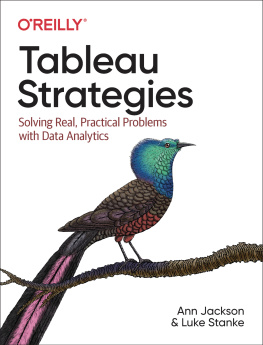
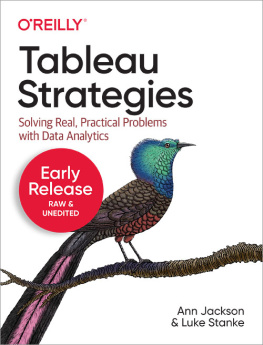

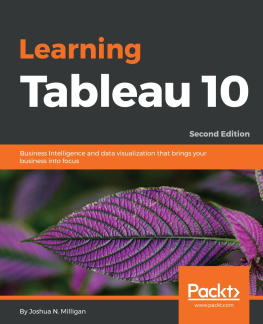
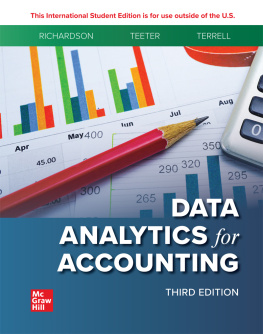
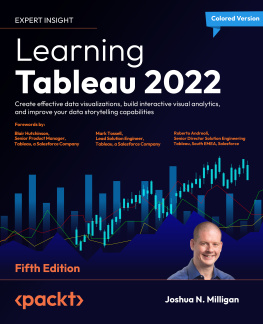
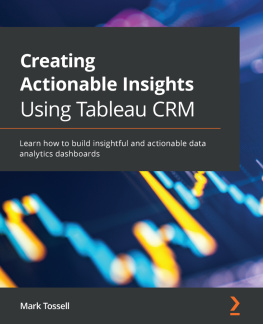
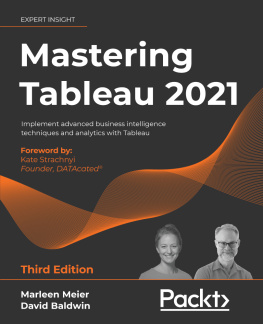
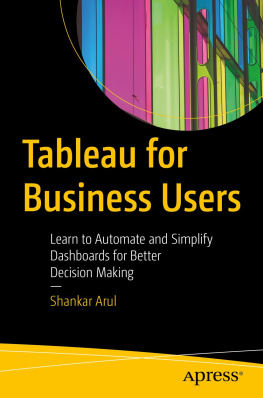

![Jones - Communicating data with Tableau : [designing, developing, and delivering data visualizations; covers Tableau version 8.1]](/uploads/posts/book/108879/thumbs/jones-communicating-data-with-tableau.jpg)
